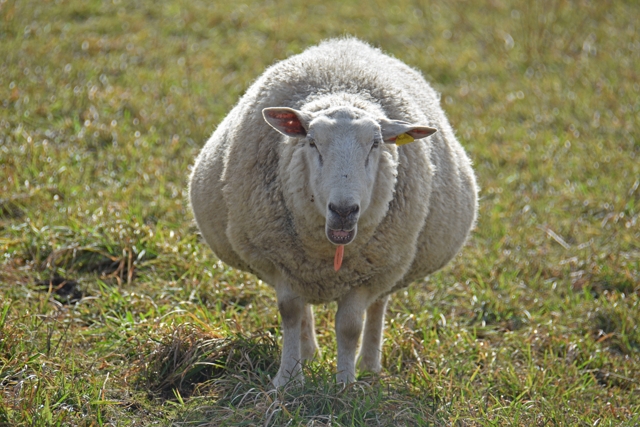Are ewe abortions costing you money?
06 May 2022
PRODUCTION ADVICE & NRM NEWS - MAY 2022 - ANIMAL HEALTH
By Linda Searle District Veterinarian
P: 03 5881 9919 | M: 0427 629 740 | E: linda.searle@lls.nsw.gov.au

Are you lambing soon? You’re probably expecting those good preg scanning results will mean a lot of lambs on the ground. But, sometimes there aren’t as many lambs born as you expect and abortions can be one of the reasons that those expected lambs don’t appear. There can be a number of reasons why ewes abort, however, in the Murray region, we have recently seen ewe deaths and abortions due to Salmonella infection.
Sometimes abortions are obvious as you find foetuses in the yard or the paddock. Unlike full-term lambs, these foetuses are usually small and may not be fully formed (eg missing wool). Often, due to either scavenging by predators or because they are small and rapidly break down, abortions can go unnoticed and it's not until marking that the loss becomes apparent.
While it is normal for around 1-2% of pregnant ewes to abort, more than 5% of a flock aborting is something that really should be investigated. This is because some causes of abortion are infectious and can rapidly spread from ewe to ewe.
Some infectious causes of abortion found in Australia include:
Cause | Signs | Predisposing factors |
Salmonella | Ewe deaths and/or scours | Contamination of feed or water. Can be environmental or from infected carrier ewes. |
Campylobacter | ‘Rosette-like’ lesions in the liver of the aborted lambs | High stocking rate. Maiden ewes (or ewes that have not been exposed previously) |
Listeria | Late abortions, with yellow or white lesions in foetal liver | Feeding of silage which has not cured properly. |
Toxoplasma | Small white areas in the placental cotyledon | Cats contaminate sheep feed. Not usually a common issue in Australia. |
It is important to know that many infectious causes of ewe abortion are zoonotic and can cause illness, including abortions in humans. Good hand hygiene is important when dealing with aborting ewes or dead foetuses. More information on human health implications can be obtained from your doctor or NSW Health.
Monitor pregnant ewes for signs of abortion. Early intervention can help stop an outbreak from getting worse. You can ensure the lambing area is clean by removing aborted foetuses as well as removing the ewes that have aborted from the mob. Antibiotic treatment can also be needed in some cases.
Preventative measures can include vaccination (eg Campyvax which protects against campylobacter), managing stocking rates, and ensuring the lambing paddock is free from toxins such as toxic weeds and chemicals.
By being alert and prepared, you can give those potential lambs the best chance of arriving and thriving in your flock.
If you are concerned you may be dealing with abortions in your flock, contact your District Veterinarian on 1300 795 299 or drop into your nearest Local Land Services office.